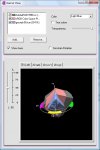David Milisock
Well-known member
@David MilisockOK, I can agree that sRGB isn't the ideal capture space for golf (or swimingpools or other holiday resort promotion).
For images where there is a choice in workflow, I usually go CameraRaw => AdobeRGB (since the choice in ACR is very limited) => Add HSB adjustment layer while toggling Proof Colours to deal with tricky out-of-gamut colours (Using relative and BCP enabled). I leave the the images in RGB, mainly for possible cross-media re-use and it also gives the possibility to repurpose for alternative production workflow (and smaller file sizes).
Sure sRGB is fine for many jobs but the issue is this if you capture with a wide gamut you can always go to a smaller gamut and it takes nothing extra.
Last edited:














